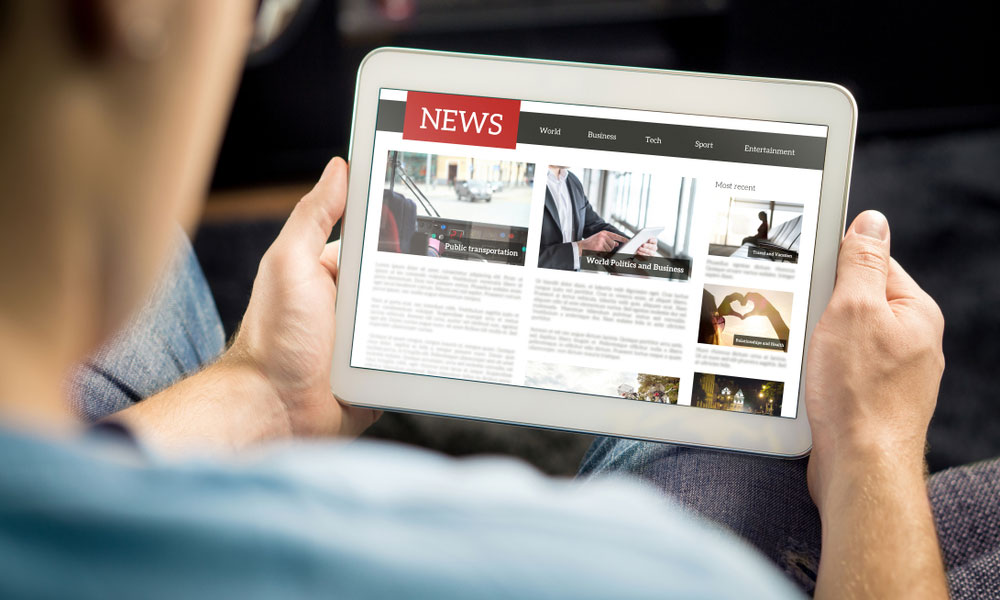DW News Unique Records on Environmental and Environment Problems
DW News Unique Records on Environmental and Environment Problems
Blog Article
Exactly How Information Online Is Changing the Method We Take In Info
In the digital age, the consumption of news has actually undergone a seismic shift, offering both complex challenges and extraordinary chances. The immediacy of online information platforms permits individuals to accessibility details quickly, tailored to fit personal interests with advanced algorithms. Nonetheless, this benefit increases crucial inquiries regarding the reliability of resources and the capacity for prejudice, as curated web content can unintentionally develop echo chambers. As we browse this developing landscape, it becomes vital to discover how these modifications affect our understanding of the world and the ramifications for informed decision-making in society.
Instantaneous Access to Information

With the advent of electronic innovation, the way we eat information has actually undertaken a substantial change, using immediate accessibility to info at our fingertips. The immediacy of digital news implies that stories can be reported and disseminated almost instantly, getting rid of the time lag that was fundamental in print and tv media.
On-line news outlets have taken advantage of on this capacity by producing committed apps and websites that provide breaking news alerts directly to our devices. This constant flow of info makes certain that the public stays involved and knowledgeable about existing events, advertising an extra informed culture. Furthermore, the access of electronic information throughout numerous tools-- computer systems, tablets, and mobile phones-- has made it hassle-free for target markets to gain access to news anytime and anywhere.
Nonetheless, this quick circulation likewise introduces challenges, such as the possibility for misinformation to spread rapidly. The stress to release quickly can sometimes compromise precision, underscoring the demand for extensive fact-checking and accountable journalism in the digital age.
Personalized Material Shipment
Customizing information usage to specific choices has become a specifying attribute of the electronic media landscape. With the development of innovative formulas and data analytics, information systems are progressively able to deliver content that lines up very closely with individuals' interests and reading routines. This customization not only improves user engagement but likewise guarantees that customers are revealed to one of the most pertinent and timely info.
The process typically entails gathering information on the user's previous interactions, such as short articles review, topics of rate of interest, and time invested on various material types. dw news. This data is after that analyzed to anticipate the individual's preferences and to curate a personalized information feed. Therefore, individuals obtain a structured flow of details that matches their unique rate of interests, therefore creating a more reliable and satisfying information intake experience
Furthermore, individualized web content distribution has significant implications for media business. This approach likewise raises worries concerning echo chambers, where customers might only come across perspectives that reinforce their current beliefs.
Interactive and Involving Layouts
Welcoming engaging and interactive layouts has actually revolutionized the means target markets consume news online, providing an extra immersive and participatory experience. Interactive aspects such as clickable infographics, video explainers, and real-time data assimilation help with a much deeper understanding of complicated subjects, transforming easy viewers into active participants in the information story.
Moreover, live-streaming and virtual fact (VR) experiences have actually become sophisticated devices in the realm of digital journalism. Live-streaming enables audiences to witness occasions as they unravel, fostering a sense of immediacy and authenticity. Meanwhile, virtual reality provides an exceptional degree of involvement, transferring customers into a substitute you can try these out setting where they can experience tales first-hand. These layouts are particularly efficient in covering damaging information and unraveling occasions, supplying a front-row seat to worldwide occurrences.
The Function of Social Network
Social media's pervasive influence has actually redefined the landscape of news consumption, transforming it into a more equalized and interactive experience. Platforms such as Twitter, Facebook, and Instagram have actually come over here to be central hubs for news dissemination, allowing customers to gain access to info promptly and share it commonly. This accessibility makes it possible for people to not only take in information however additionally engage with it, cultivating a space where diverse voices can add to the discussion.

Social media site's algorithm-driven personalization tailors the information experience to specific preferences, potentially increasing involvement. Nonetheless, this can also produce resemble chambers, where customers are exposed primarily to perspectives that enhance their present ideas. Regardless of this, the role of social networks in information intake remains pivotal, linking the space between info service providers and target markets, and reshaping just how individuals communicate with information in the digital age.
Obstacles of Online News
While the electronic improvement of information shipment supplies extraordinary access and immediacy, it additionally offers substantial difficulties that complicate the landscape of info usage. One primary problem is the expansion of misinformation useful site and disinformation, which can spread out quickly across electronic systems. This presents troubles for customers in discerning credible resources from those that are less reputable, potentially bring about prevalent misconceptions.
The rate at which news is delivered on-line typically focuses on timeliness over accuracy. In the race to be initially, some outlets might publish unproven information, which can later verify to be inaccurate, eroding public count on media. Furthermore, the echo chamber effect, promoted by algorithms that customize material to customer choices, can reinforce existing predispositions and limit direct exposure to diverse point of views.
Money making strategies better complicate the landscape. The dependence on marketing earnings incentivizes sensationalism and clickbait, overshadowing substantive journalism. Paywalls, while necessary for monetary sustainability, can restrict accessibility to quality information, intensifying info inequality.
Conclusion
The improvement of information intake through online systems has significantly transformed info gain access to and involvement. A balanced approach is essential to harness the advantages of online information while reducing its fundamental dangers.

As a result, customers obtain a structured flow of information that matches their unique passions, therefore producing a much more satisfying and efficient information usage experience.
Platforms such as Twitter, Facebook, and Instagram have actually ended up being central hubs for information circulation, allowing customers to accessibility information promptly and share it commonly. Despite this, the function of social media in information usage continues to be crucial, connecting the void in between details suppliers and target markets, and reshaping just how people interact with information in the digital age.
Report this page